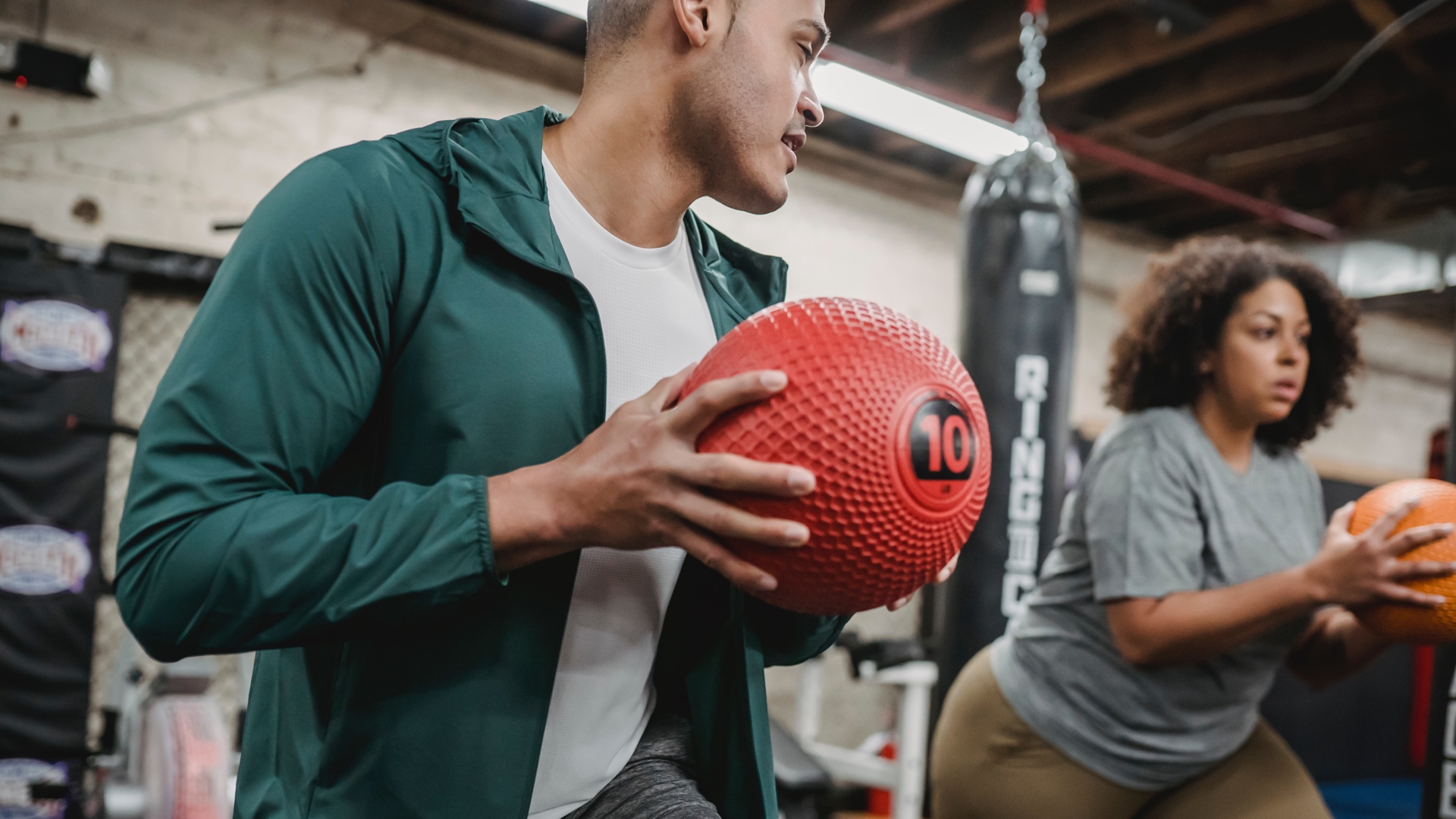How do you ensure your job as a personal trainer is benefitting your clients and is highly rewarding for you, too? Here, FitPro, the largest organisation in the UK for fitness professionals, dives deep into how you can thrive – and not just survive – as a personal trainer.
Personal training is a career of early starts and late finishes. Let’s face it: it’s not just a job, it’s a lifestyle. It’s not unheard of for 50 hours spent at the gym to translate into 25 hours of actual personal training – there are often gaps between clients, even if you’re a whizz with the scheduling.
However, a savvy personal trainer will use this time well, getting the admin and client programming done and performing their own workouts. After all, personal training is a strenuous business. PTs must be robust and comfortable being on their feet all day, providing demonstrations of technique, which requires a lot of practice. Not to mention being sociable and energetic all day!
To be a successful personal trainer, you need to gain the right qualifications. Most courses begin with a Gym Instructor (Level 2) qualification, which gives you the basics, before moving on to the Personal Trainer (Level 3) qualification to upgrade your knowledge and coaching skills so you can work with people on a one-to-one basis. There are also specialist qualifications, some of which we will mention here. You also need to be insured, which is a legal requirement for a personal trainer.
So, let’s discover which type of personal trainer you are and how you can thrive in your chosen specialism.
There are many niches to explore as a personal trainer. If you can discern early on what type of coach you’d like to be – for example, working with special populations, athletes or aspiring beach bodies – you can concentrate on building a strong business model with specific skillsets gained through qualifications, plus a solid understanding of the area you’d like to work in. Let’s take a look at a few of those areas here and how you can thrive in them:
1. Special populations
Special populations are diverse. You may choose to work with pre- or postnatal women to facilitate a healthy birth, pregnancy and start to motherhood, or you may work with children to encourage a lifelong love of exercise. Perhaps providing disabled people with training opportunities that support a healthy life is what moves you, or you may choose to work with the ageing population, helping elderly people to enjoy activity in their later years and reap the benefits it brings. Alternatively, you may wish to support those who have been ill or injured, working on a referral basis with other professionals to help clients return to doing things they enjoy. Each avenue offers unique challenges for you.
To thrive as a special population’s personal trainer, you should:
- meet your client where they are – at their current level of ability – while planning progressive, smart training programmes to aid their development
- build trust – being patient, a great communicator and having the ability to inspire will help you to build trust with your client
- know your onions when it comes to your client’s specialist area. Do your homework – but don’t overstep the mark. Refer back to other professionals if you need to
- build a support network around yourself – having other health professionals you trust and can refer out to gives your client a wider scope of treatments and solutions.
Useful qualifications for a personal trainer working with special populations include Level 3 Exercise Referral; FAI; ViPR Active Ageing; ViPR Kids; and Pre- and Postnatal.
2. Sports specific
Whether you work with elite, semi-professional or recreational athletes, as a sports-specific PT you will be tasked with finding the margins that help make the difference between winning and losing. You’ll need to work well with other team members, such as coaches, managers and physios, to collectively create the ultimate grounding for success.
To thrive as a sports-specific PT, you should:
- support your client to fulfil their athletic potential, strengthening movement patterns and energy systems that are particular to the sport and athlete
- be able to work in conjunction with other professionals to create a team around the athlete
- perform a lot of research into the specific sport you will be coaching athletes for, along with its movement and energy requirements
- remain up to date with the latest scientific research
- learn the skill of planning training blocks to work with the sporting calendar and competition needs
- build trust and rapport with your athlete to create a successful programme.
Useful qualifications for a sports-specific personal trainer include strength and conditioning courses; Olympic weightlifting courses; and SAQ courses.
3. Body transformation
The primary goal of a body transformation PT is to help their clients look better. However, achieving aesthetic goals also increases people’s confidence, self-esteem and self-worth, as well as improves fitness and health. Achieving a weight-loss goal may also help a client to feel mentally stronger and improve classic health markers, such as the risk of heart problems and diabetes.
Once clients achieve their targets, body transformation coaches can progress their clients’ achievements further, for example, building and sculpting muscle or reducing body fat.
To thrive as a body transformation PT, you should:
- understand muscle anatomy, and how to isolate and train target groups in a variety of different ways
- understand metabolism and how to provide clients with the best nutrition plans to achieve the transformation
- help and support clients to change their behaviours so they can make long-term, sustainable changes
- be brilliant at motivation, to enable clients to remain engaged with their programme
- be able to market yourself in a visual way to demonstrate the outcomes your programmes can achieve.
Useful qualifications for a body transformation PT include nutrition courses; behaviour change courses; and weight management courses.
4. Health and performance
Working as a health and performance personal trainer is great for those who want to help improve their clients’ health and fitness, feel stronger and fitter, move better and enjoy a more active lifestyle (often without pain or discomfort) – from playing with the grandkids to getting outside for long hikes and everything in between. Health and performance PTs will also work with clients who are recovering from injury or illness and feel they need some extra help to get them to where they want to be.
To thrive as a health and performance PT, you should:
- understand human movement and, therefore, be able to identify and address movements and systems that require improving
- be able to progress and regress exercises in creative ways to suit the needs of each individual client – one size does not fit all – finding bespoke ways to help clients overcome their barriers with confidence
- bring a fun element to your functional training
- be able to communicate with clients honestly and clearly, explaining the complexities of the human body in a way a client can understand.
Useful qualifications for an HPC include Biomechanics Method; Pain-Free Movement Specialist; ViPR LMT1 and 2.
Whatever your choice of specialism as a PT, it’s important to keep moving forward, adding to your skillset and reviewing your knowledge. Read more about FitPro’s courses here.

I am a marketing and business development professional with experience in delivering successful marketing strategies for client acquisition and retention. I have a passion for building engaged communities across different channels working with partners to amplify messaging. Ene’s focus at Gymcatch is on growing and maximising strategic partnerships through business collaboration.



